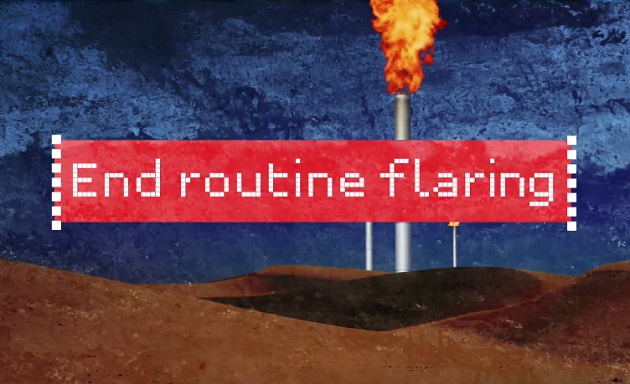
Image capture from World Bank YouTube video.
It’s going to take a while – until 2030 for full implementation – but nine countries, ten oil companies and six development institutions have joined a World Bank effort to end the practice of routine gas flaring at oil production sites.
“Gas flaring is a visual reminder that we are wastefully sending CO2 into the atmosphere,” said World Bank President Jim Yong Kim. “We can do something about this. Together we can take concrete action to end flaring and to use this valuable natural resource to light the darkness for those without electricity.”
A remarkable amount of natural gas goes to waste due to flaring at oil production sites around the world – 140 billion cubic meters annually, equal to about a fifth of U.S. gas consumption. That sends 300 million tons of CO2 into the atmosphere, the World Bank said.
Not all the gas can be safely captured, but the “Zero Routine Flaring by 2030” initiative aims to end flaring that happens “during normal oil production operations in the absence of sufficient facilities or amenable geology to re-inject the produced gas, utilize it on-site, or dispatch it to a market.” Creating markets for the gas will be a chief goal of the initiative, whose list of endorsers so far covers 40 percent of global gas flaring.
